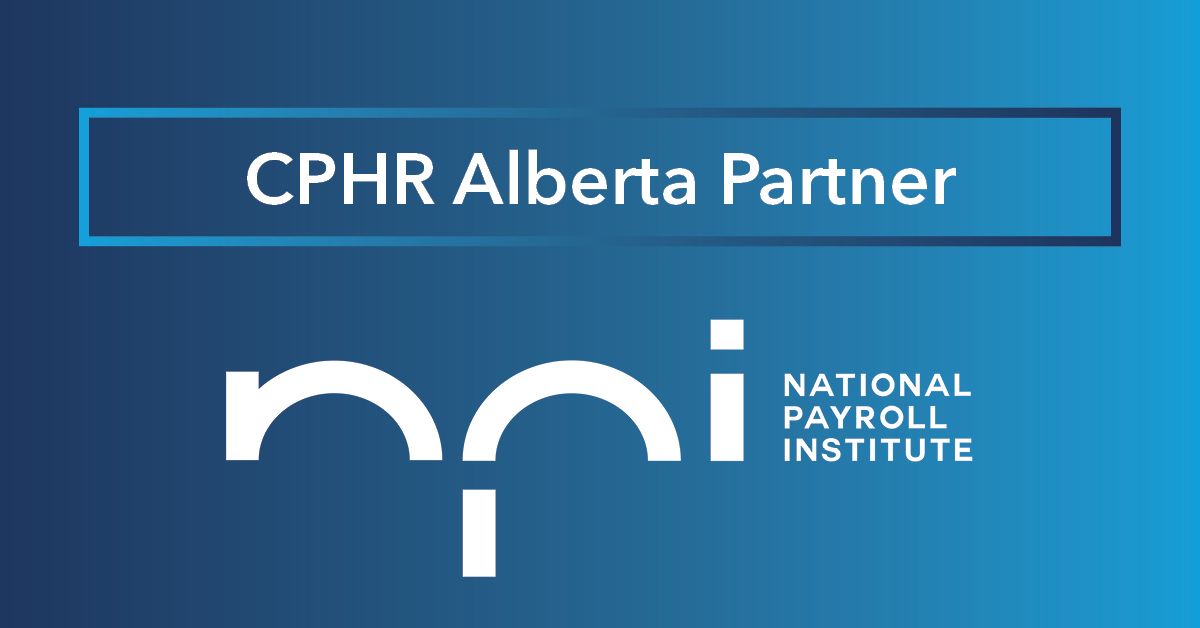
Getting to know our partners – National Payroll Institute

In 2022, the association renewed our partnership with the National Payroll Institute (NPI) to continue bringing payroll professional development seminars and webinars to our members.Annually, the National Payroll Institute has offered CPHR Alberta members the opportunity to attend (in-person and online) webinars and seminars at a preferred rate. The 2022 session offering includes:
- Learning Payroll I
- Learning Payroll II
- Taxable Benefits and Allowances
- Employment Standards
- Special Payments & Completing the ROE
- Terminations
- Pensions and Benefits from a Payroll Perspective
- Best Practices of Employee Group Benefits
- Legislative Update: Year-End & New Year
A new name! On March 7, 2022, the Canadian Payroll Association announced that it is now known as the National Payroll Institute.According to the Institute, this change is the result of 40 years of success and how the payroll profession is viewed today.“Not long ago, payroll was looked at as an administrative task that anyone could do,” explains Peter Tzanetakis, President of the National Payroll Institute. “Today, it's a career that requires training and investment. It is understood that payroll needs to be treated with professionalism and that payroll is at the heart of business. As the National Payroll Institute, we are better positioned to meet the evolving needs of the profession and businesses across Canada.”More than just a name change, the rebrand comes with a promise: to continue innovating through investments in new services, resources, education, research and government advocacy initiatives throughout 2022 and beyond.To learn more about the National Payroll Institute, visit www.payroll.ca How to access the National Payroll Institute webinars and seminars The National Payroll Institute seminars and webinars are available on their website or by clicking the link below. CPHR Alberta members can register at a preferred rate by using a promo code at check out. To access the promo code visit your member portal here – under the MENU find the RESOURCES tab and click on Partner Online Learning Opportunities ! National Payroll Institute Seminars National Payroll Institute Webinars To become a member of CPHR Alberta visit www.cphrab.ca/become-member
The views and opinions expressed in this blog post belong solely to the original author(s) and do not necessarily represent the views and opinions of CPHR Alberta.





